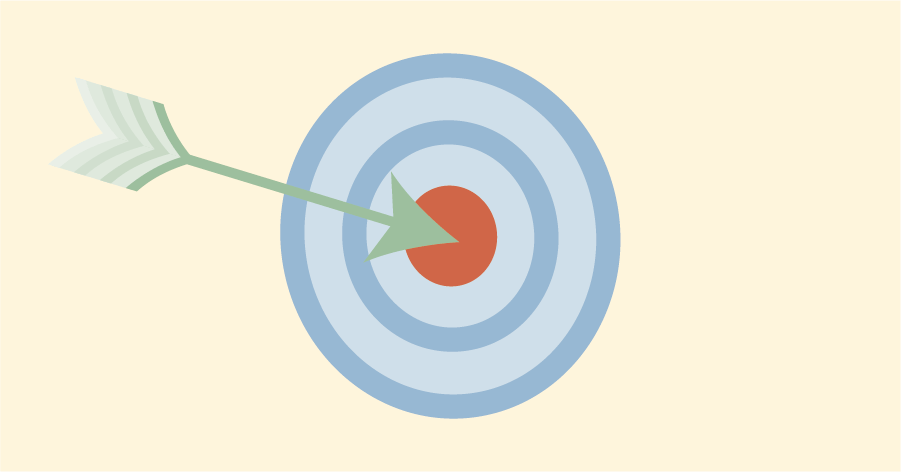Using the 7 Habits by Stephen Covey
In this blog about effective planning, I project the theory of Stephen Covey’s “7 habits of highly effective people” onto the world of project and resource planning. I focus specifically on the process and the people.
1. Plan your projects proactively
Effective planning is a proactive activity. It should not be the case that you quickly put together a schedule while your projects have already started. In addition, a proactive attitude only works if you have set up the responsibility for the planning process and you have assigned the right people to it.
For projects in the proposal stage, you can choose to make the account managers responsible for estimating the required resources. You can do this, for example, for projects where you assess the chance that the project will start within three months. This assessment allows planners and department managers to get the workforce in order and, if necessary, to begin recruiting and training.
To be able to plan effectively, you first need a tight process. In addition, you must regularly meet with your account managers, planners and project managers. These meetings are necessary. It isn’t easy to prepare yourself for the future without those meetings. In addition, it is essential that you and your colleagues adhere to the processes and that it is clear to everyone how many resources you’ll need in the short and medium-term.
2. Effective planning begins with the end in mind
The “begin with the end in mind” habit tells you to create everything twice. This mindset also applies to the planning process. You first determine the purpose of planning and what you want to achieve with it. Many people forget this step because project managers and planners are real doers and want to start immediately.
Of course, you make a schedule for projects. That is not up for debate at all, but what is the goal of the planning process? If you regularly meet with project managers and planners to match supply and demand, there must also be a higher purpose.
The goal may be that you want to increase the percentage of billable hours of employees, for example. Another goal may be to reduce project delays. So the first step of effective planning is goal setting (the ‘what’). After this step follows the second step, which is keeping track of and discussing progress; if you want to know more, read the blog a process for project and resource planning.
3. First things first
This habit says that if you want to be as effective as possible, you must prioritize the important things. In this way, you achieve your goal as effectively as possible, and you can also keep the side issues under control. However, if you focus on the side issues first, the essential things will suffer. Covey nicely visualizes this in the example of the two pots with stones. You can read more about it in this blog.
If you translate this quality into planning, the essential things are the big projects that you carry out for your customers. Therefore, to plan as effectively as possible, it’s crucial to plan the big projects first and then use the small projects to fill the gaps between the big projects.
You can easily slide a small project between activities, so you remain flexible. Every day something changes in your projects, so flexibility is desperately needed. Don’t make fixed agreements with customers about when these small projects are delivered. Use a wide margin so that you can under promise and over deliver.
To plan as effectively as possible, I also advise you to separate the big projects from the small ones. Have those big and small projects carried out by separate teams. Small projects are often more dynamic and require a different attitude from the employees involved. When putting together a project team, select the employees who function well in the project environment. In this way, employees perform as optimally as possible.
4. Think in terms of Win-Win
The fourth habit that Stephen Covey describes looks at the contradictions between two parties and how you can resolve these contradictions. And in such a way that both parties are happy, so win-win. This habit also applies to planning. Effective planning is only possible if all parties involved can gain something.
Effectively planning and executing a project starts with making good agreements with your customer. A project where the customer imposes an unrealistic deadline or bargains a way too low price is a real win-lose project. Furthermore, these win-lose projects are demotivating for your project team. Because, who wants to work on a project where the customer is pushing and squeezing you?
Therefore, it is vital that you understand your customer’s expectations from the start. You should also make clear what the customer can expect from you. The best approach is, therefore, a win-win or no-deal approach. Both parties have to be happy with the conditions. Is that not the case? Then don’t start. It is better not to start a project where both parties are ultimately left frustrated. This approach requires that you remain true to your principles. Do you dare to say ‘no’?
5. Seek first to understand, then to be understood
In the fifth quality, Stephen Covey writes that all of us, including you and me, tend to jump to conclusions, give advice, and then move. So we forget to examine the problem first and understand the other person. Effective planning requires good cooperation. That is a challenge because interests can sometimes clash.
I’ve mentioned it in another blog, but project managers can perceive planners as rigid. In addition, planners would often not understand the goals of their projects. Project managers also often see planners as annoying police officers because, for them, the rules surrounding the planning process are sacred. In turn, planners often view project managers as erratic and selfish, fighting only for their own projects. Planners, therefore, often find that project managers forget the company’s interests.
But if the planner puts himself in the position of the project manager, they will understand that that focus is correct. With a focus on the result of the project, the project manager serves the company’s interests. It is not surprising when project managers fight for the best people. It is essential that you complete projects on time and within budget. That also applies to the planner. That annoying focus on the rules and keeping people to agreements is good. This focus helps the company to function effectively.
The great thing is that both roles complement each other. They work together to ensure you deploy employees efficiently. And that provides an optimal result.
6. Effective planning requires synergy
Synergy means that your project achieves a better result by working together than if everyone were to work separately. You can only achieve synergy if all the pieces of the puzzle fit together. If we look at planning projects as effectively as possible, you need three ingredients. These are processes, people and systems. If you miss one of these ingredients or if one of them is not functioning correctly, you will not achieve synergy.
Planning starts with a good process. This element is the blueprint through for planning effectively because you tailor a method to the company’s goals. Bad design always leads to ineffective planning, even if you have the right people and systems.
The second ingredient is people. Specifically, we’re talking about the people who plan your resources. These are your planners and project managers. Do these people have the right experience and skills to plan effectively? This is not always the case so you should never assume that.
Finally, it is vital that you choose the right planning software. Select software that fits the process and that will help you efficiently automate the work around the planning. We have written an article about this that can help you with that.
7. Sharpen the saw
This last habit tells us that we should never stop improving ourselves. If we translate that into effective planning, we have to measure how well your are planning. You can do it, for example, with a KPI like the planning performance. This metric allows you to see how well you can predict the actual hours. Of course, you want to get better at predicting this every time.
You may think that you will automatically get better at planning, but that isn’t the case. Customers, projects, and employees are constantly changing, affecting the effectiveness of your planning. You, therefore, have to measure and continuously monitor the planning performance. This way, you can see whether you are getting better or worse in planning your projects and resources.
You also have to look at which parts of your company are doing worse or stagnating in that analysis. Is this a specific department? Or does it concern an entire group or particular individuals? Based on this analysis, you can decide to organize your company differently or help certain employees learn to plan better. That is, of course, something we all want, because with an effective plan, you’ll earn money as a company.





